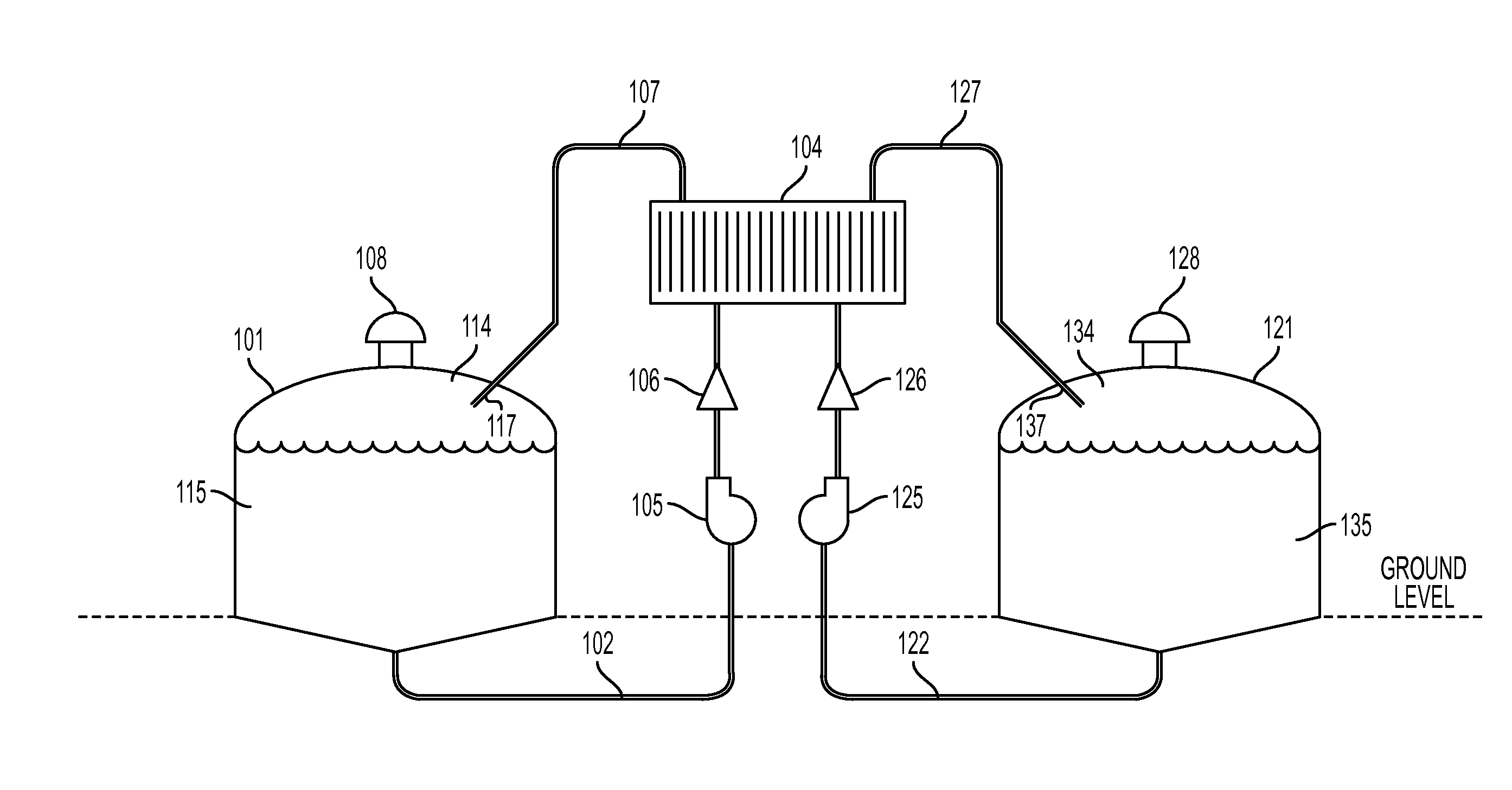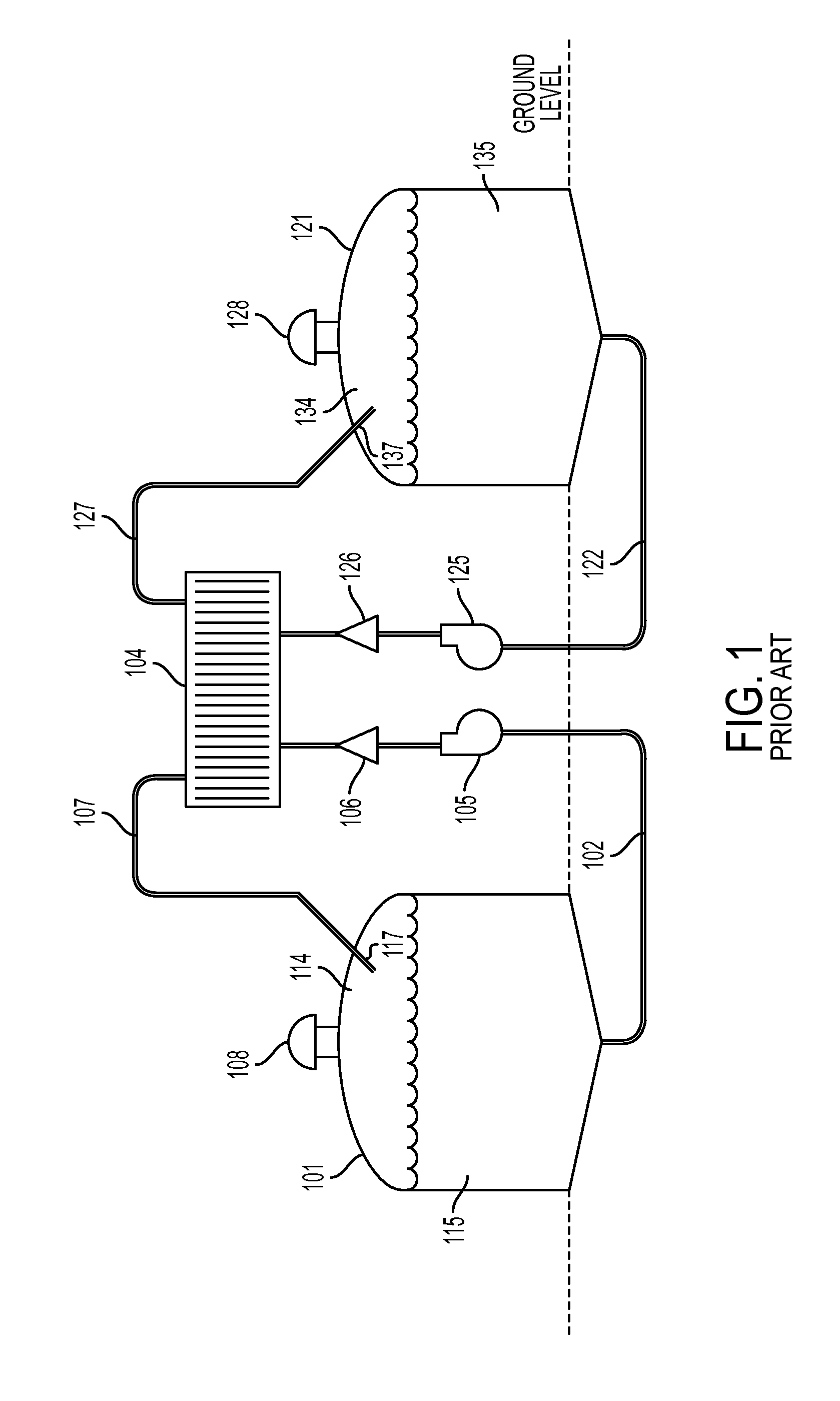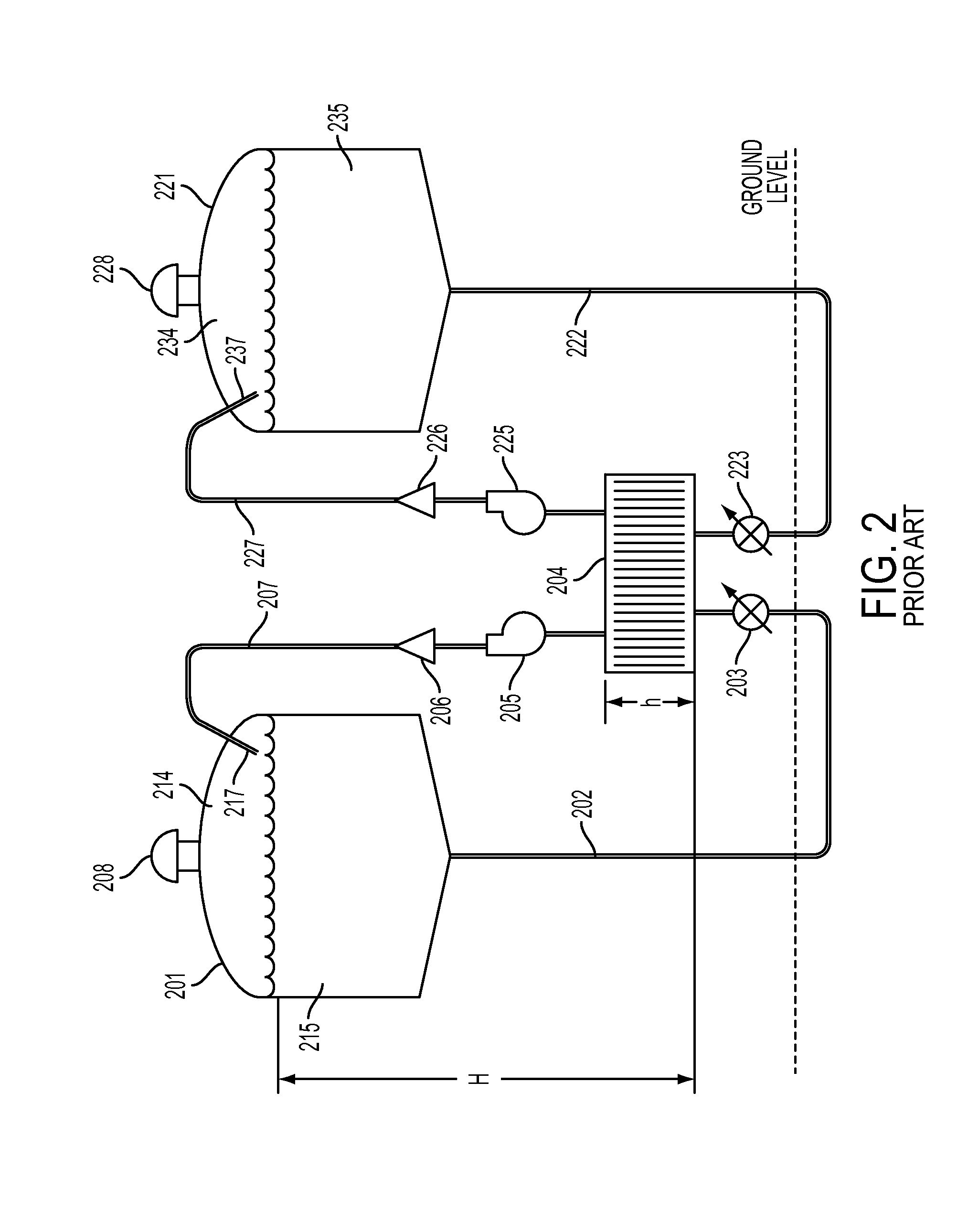Pressure feed flow battery system and method
a flow battery and flow system technology, applied in the direction of electrolyte stream management, indirect fuel cells, electrochemical generators, etc., can solve the problems of reducing the overall efficiency of the flow battery, pressure spikes, and reducing the productive life of the flow battery
- Summary
- Abstract
- Description
- Claims
- Application Information
AI Technical Summary
Benefits of technology
Problems solved by technology
Method used
Image
Examples
Embodiment Construction
[0064]Reference will now be made in detail to one or more embodiments, illustrated in the accompanying drawings, wherein like reference numerals refer to like elements throughout. In this regard, embodiments of the present invention may be embodied in many different forms and should not be construed as being limited to embodiments set forth herein. Accordingly, embodiments are merely described below, by referring to the figures, to explain aspects of the present invention.
[0065]One or more embodiments relates to a method of using pressure to control the distribution of electrolytes through a battery stack portion of a redox flow battery. In one or more embodiments, such a pressure feed approach can be used to distribute electrolytes through the battery stack(s) without the need to place pumps between the electrolyte storage tanks and the battery stack(s). In one or more embodiments, several methods of using pressurized tanks to provide sufficient head pressure to push electrolyte th...
PUM
| Property | Measurement | Unit |
|---|---|---|
| electric power | aaaaa | aaaaa |
| power | aaaaa | aaaaa |
| flow rate | aaaaa | aaaaa |
Abstract
Description
Claims
Application Information
 Login to View More
Login to View More - R&D
- Intellectual Property
- Life Sciences
- Materials
- Tech Scout
- Unparalleled Data Quality
- Higher Quality Content
- 60% Fewer Hallucinations
Browse by: Latest US Patents, China's latest patents, Technical Efficacy Thesaurus, Application Domain, Technology Topic, Popular Technical Reports.
© 2025 PatSnap. All rights reserved.Legal|Privacy policy|Modern Slavery Act Transparency Statement|Sitemap|About US| Contact US: help@patsnap.com



